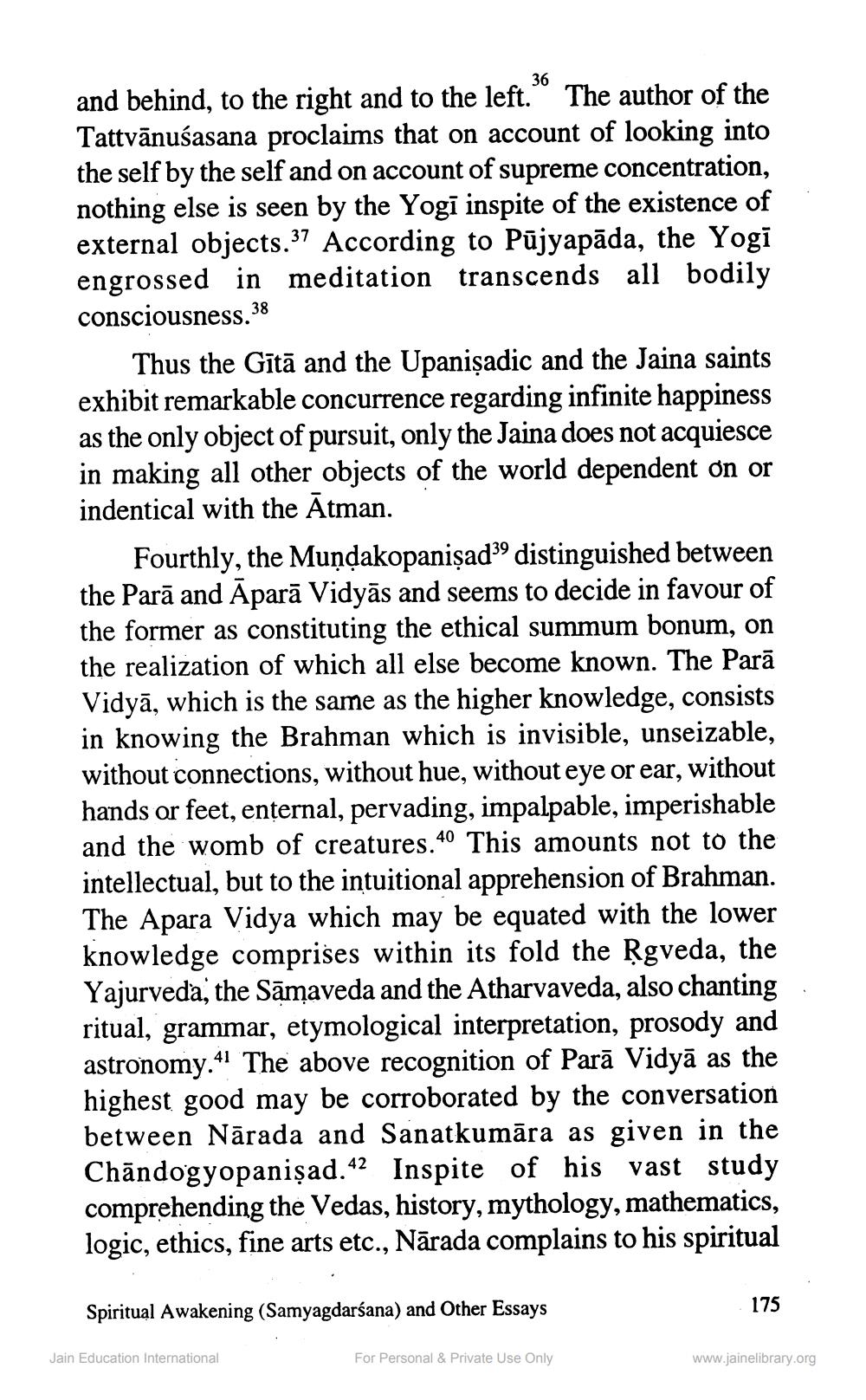________________
and behind, to the right and to the left." The author of the Tattvānuśasana proclaims that on account of looking into the self by the self and on account of supreme concentration, nothing else is seen by the Yogī inspite of the existence of external objects.37 According to Pūjyapāda, the Yogi engrossed in meditation transcends all bodily consciousness. 38
Thus the Gītā and the Upanişadic and the Jaina saints exhibit remarkable concurrence regarding infinite happiness as the only object of pursuit, only the Jaina does not acquiesce in making all other objects of the world dependent on or indentical with the Ātman.
Fourthly, the Mundakopanișadoo distinguished between the Parā and Aparā Vidyās and seems to decide in favour of the former as constituting the ethical summum bonum, on the realization of which all else become known. The Parā Vidyā, which is the same as the higher knowledge, consists in knowing the Brahman which is invisible, unseizable, without connections, without hue, without eye or ear, without hands or feet, enternal, pervading, impalpable, imperishable and the womb of creatures.40 This amounts not to the intellectual, but to the intuitional apprehension of Brahman. The Apara Vidya which may be equated with the lower knowledge comprises within its fold the Rgveda, the Yajurveda, the Sāmaveda and the Atharvaveda, also chanting ritual, grammar, etymological interpretation, prosody and astronomy.41 The above recognition of Parā Vidyā as the highest good may be corroborated by the conversation between Nārada and Sanatkumāra as given in the Chāndogyopanişad.42 Inspite of his vast study comprehending the Vedas, history, mythology, mathematics, logic, ethics, fine arts etc., Nārada complains to his spiritual
Spiritual Awakening (Samyagdarśana) and Other Essays
175
Jain Education International
For Personal & Private Use Only
www.jainelibrary.org




